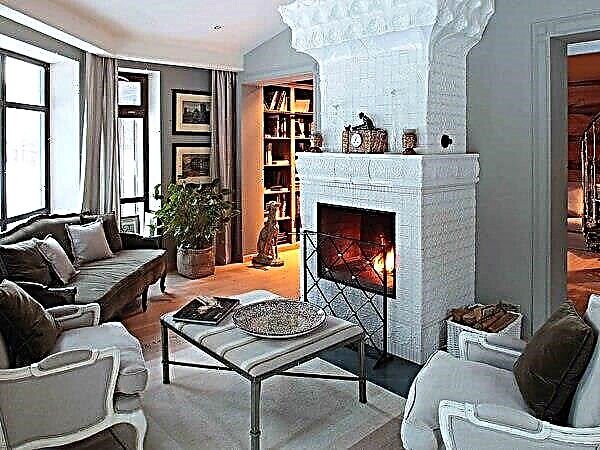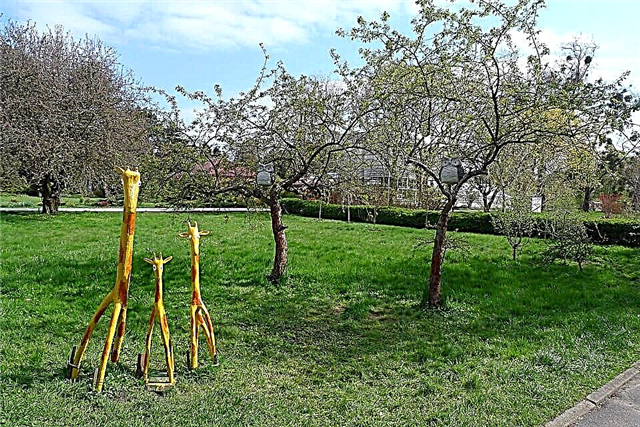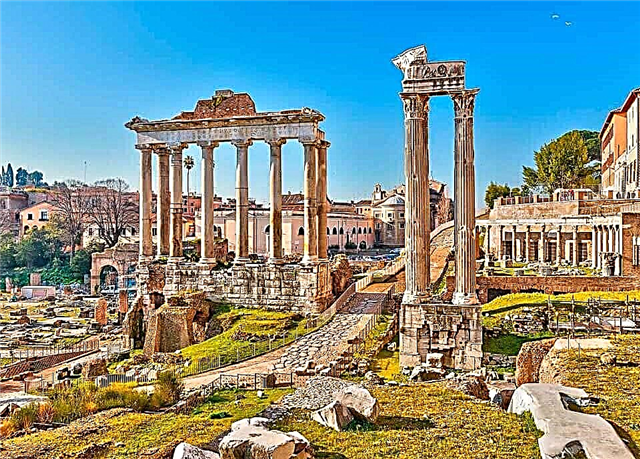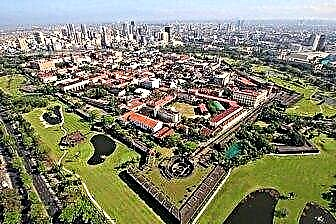The capital of the Philippines is one of the ten most populous cities in the world. During its existence, Manila has experienced many upheavals. The main ones are associated with the time of colonization and wars. The Spaniards left behind a cultural heritage, but destroyed many of the Filipino national values. Various sights have appeared in honor of the fighters for independence. José Rizal, the hero of his people, is especially noted for honors.
In Manila, there is the Intramuros historic district, where almost every building, structure and even walls is an architectural monument. There are many churches, but Kuiapo stands out among them. It contains a statue, for the sake of which several million people gather for a procession once a year. Manila is also the cultural center of the state, so the best museums in the Philippines are collected here.

The best hotels and hotels at affordable prices.
from 500 rubles / day
What to see and where to go in Manila?
The most interesting and beautiful places for walking. Photos and a short description.
Intramuros
The oldest area of Manila. Its name in translation means - "inside the walls". Despite its historical value, Intramuros remains a residential area. Tourists are primarily interested in the buildings of the past, for example, Fort Santiago. Cathedral of San Augustin - the oldest building in the city, is also located in the district. Around the space was ennobled, golf courses were made on the site of defensive ditches.

Fort Santiago
It appeared in the city thanks to the conquistador Miguel Lopez de Legazpi in the 16th century. At the same time, the structure was originally erected from logs and embankments. The height of the walls is 6.7 meters, the thickness is up to 2.4 meters. The fort became the place of imprisonment of the Filipino folk hero Jose Rizal until his execution. Now the grounds inside the fort are used for recreation, sometimes local theaters organize outdoor performances in the open air.

Jose Rizal Park
It began to form in the 18th century. It was originally a plaza with many functions, for example, decrees were issued and pro-independence Filipinos were executed here. Among those executed was Jose Rizal, a local hero, after whom the park was later named. On the territory of 60 hectares there are green areas, monuments, a greenhouse, a planetarium, a mausoleum, museums and a lake with a model of the Philippine islands.

Chinatown
Chinatown developed rapidly after the Philippines gained independence. It occupies two districts: Santa Cruz and Binondo. Chinatown may seem compact: a walk along the main street will take just over 10 minutes. Moreover, there are many shops, interesting buildings and their own cultural traditions. Therefore, it will take time to study the area. Workshops where items are made of gold and silver are especially noteworthy.

Division
The market is located in the center of the Old Town. Differs from many typical Asian trading spots. Modern malls and small shops coexist in a large space, and famous brands are sold behind the next door from a handicraftsman. You can buy everything in the Division: from food to clothing and jewelry. The peak of the trading season is a couple of weeks before the start of the school year and before the New Year holidays.

Memorare Manila Monument
Inaugurated in 1995 in the Intramuros area. Created in memory of the people who died in the liberation of Manila from the Japanese invaders in 1945. In the center of the sculptural composition is a woman with a lifeless baby in her arms, and around five more figures, also on the verge. There are many symbolic things in the monument. The battle lasted for a month, and at that time about 100 thousand civilians were killed.

Manila Cathedral
Located in the historical part of the city. The cathedral was consecrated in honor of the Immaculate Conception of the Blessed Virgin Mary. The current status of the cathedral comes from the time of the colonists. The building that stands on this place now is the sixth in a row. The first temple was erected in 1571, the last in 1958. Due to the constant reconstructions, the cathedral turned out to be so unusual - combining different styles: neo-Byzantine, Romanesque and Renaissance.

Church of St. Augustine
Construction took place in the early years of the 17th century, making the church the oldest in the Philippines. Carvings on doors and benches, Baroque decorations, sculptures in the courtyard, as well as the ceiling painted by Italian artists are the main features of the temple. There are several graves of famous people on the territory of the church. In 1993 it was included in the UNESCO World Heritage List.

Binondo Church
Another name is the small basilica of St. Lorenzo Ruiz. Founded by Dominican monks. The original building has not survived. The current one was built in 1852. The bell tower is large and massive. It has an octagon at the base and dates back to the end of the 16th century. Although the church was damaged during the Second World War, the bell tower remained almost intact. The restoration of the temple was long and ended only in 1984.

Church of Saint Sebastian
In the second half of the century before last, four churches were successively built on this site. The first three were destroyed, and the basilica, dated 1891, has survived to this day. Its architectural style is neo-gothic. The peculiarity of the church is a prefabricated metal structure. This is done to protect the building from earthquakes. There are no similar religious sites in the world. The main shrine is the figure "Virgin Mary from Mount Carmel".

Church of Cuiapo
Built in 1928. There are life-size sculptures in the niches of the facade and on the fence. The main value of the church is the "Black Nazarene" statue. In her honor, a procession is held annually, attracting several million people. The rest of the time, people come to the statue with worship and prayer. The church also conducts side activities, for example, providing the poor with the services of a doctor and a lawyer.

Malate Church
Built by Augustinian monks on the shores of Manila Bay at the end of the 16th century. Natural disasters and wars did not allow the first building to survive. Alterations and repairs were carried out constantly. The last restoration took place in the second half of the last century. The façade is quite unusual for a Catholic church. It is called a symbiosis of Baroque and Muslim architecture. The walls are decorated with frescoes inside.

Casa Manila
Located in the center of Intramuros and close to the Cathedral of St. Augustine. This ethnographic complex is a small area where the local bourgeoisie lived. The houses have retained not only their external appearance. The interior decoration also corresponds to the past and the status of the former owners. The walls of Manila were needed, among other things, to separate the Spaniards and the Filipinos. Therefore, the quarter was always isolated.

National Museum of Fine Arts
The former name is the National Art Gallery. The building was built in 1921. Previously, legislators sat here. It was transferred to the museum in 1998. The collection is diverse, all the halls are unique in their design. Paintings, sculptures, frescoes and stained glass windows from churches and even parts of building facades are on display for all to see. There are works by eminent masters of different periods and valuable historical objects.

National Museum of Anthropology
Formerly called the Museum of the Philippine People. The building has five floors, and each has separate exhibitions by theme. One of the exhibitions is dedicated to the wreck of the San Diego Legion, and there are exhibits on the ivory trade in the region. There is a library at the museum. Even in the courtyard of the complex, there are museum exhibits, for example, a model of a typical Filipino dwelling of the past.

National Museum of Natural History
Has been working since 2018.The funds are collected from several museums of similar subjects, united into one. The building was built in 1940, but it originally had a different purpose. During World War II, it was destroyed, and after the war, it was restored in the same place and in the same form. Before the collection of the Natural History Museum was housed here, the building was rebuilt at a cost of about a billion pounds.

"Museum of Light and Sound"
The exposition is divided into three parts: the period before the Spanish colonization, the time when the conquistadors commanded the country, the life and struggle for independence of Jose Rizal. The peculiarity of the museum is that the excursion is accompanied by sounds and video sequences. The transition from hall to hall is like a change in a historical era. Interactive components make you feel like a participant in events. This makes it easier and more interesting to perceive information.

Bahai Tsinoy
Founded in 1996, it opened for visitors three years later. Dedicated to the contribution of Chinese migrants to the development of the Philippines. The collection is split into several parts. Exhibits - things that belonged to members of the Chinese diaspora, evidence of the Chinese uprising of the 17th century, ceramics, drawings and photographs. The museum has a library, an auditorium for lectures, and a theater studio.

Cultural Center of the Philippines
Opened in the early 2000s. The building and the surrounding area were designed by Leandro Loksin. The center is impressive in size and houses several cultural institutions. Among them: theater of traditional arts, art gallery, museums of musical instruments and art. The concert hall can accommodate about 5 thousand spectators. The square around is decorated with fountains, and its lawn remains green throughout the year.

Metropolitan Museum
It was originally opened in 1976 for international exhibitions. Only works by foreign artists were exhibited in the halls of the museum. In 1986, the rules were changed, and local renowned and fashionable artists also gained access to the Metropolitan. There are also permanent exhibitions, for example, the ground floor is reserved for an exhibition of gold items from the 8th-13th centuries and ceramics of the pre-Columbian period.

University of Santo Tomas
The oldest existing university in Asia. Founded in 1611 by Spanish missionaries. In addition, the university is the largest Catholic in the world. At the moment, more than 44 thousand students are studying here. Its motto translates as "Truth in Grace." University buildings are located on an area of more than 21 hectares. The architecture of the enclosures combines the heritage of the past and modern solutions.

Park Paco
In the past, there was a large cemetery on this site. Burials on the site ceased in 1912. The remains of some people were subsequently transferred to other parts of the city. There are no external reminders of the cemetery left. In 1966, a park was laid out here. The area is 4 thousand square meters. A music show is held once a week in the park. Weddings and lavish celebrations are also often held here.

Manila Ocean Park
The city's first themed marine entertainment center. The Oceanarium offers a lot of entertainment, from leisurely walks among the aquariums to educational programs. Visitors can feed the penguins, visit the spa, watch sea lion tricks, and ride local attractions. In addition to aquatic mammals and fish, there is a section with birds. Some of them are exotic.

Fort Drum
It was built in the early years of the last century. The fort is also called the "Concrete Battleship". It is located at the entrance to Manila Bay. Currently, the islet and the fortifications that occupy it are more like ruins in the middle of the water. The fort was especially badly damaged during the Second World War, when there were battles between the troops of the United States and Japan. At the same time, part of the walls, several guns and towers are well preserved.

Corregidor Island
From Manila to the island can be reached by ferry. Corregidor is modest in size: 6.5 km long and about 3 km wide. It has a rich history of fishermen settlement and pirate camp. With the arrival of the Spaniards, a lighthouse appeared here, and the Americans built a military base. At the moment, a number of attractions can be seen on the island, including the Eternal Flame, War Memorial, Japanese Peace Garden.












